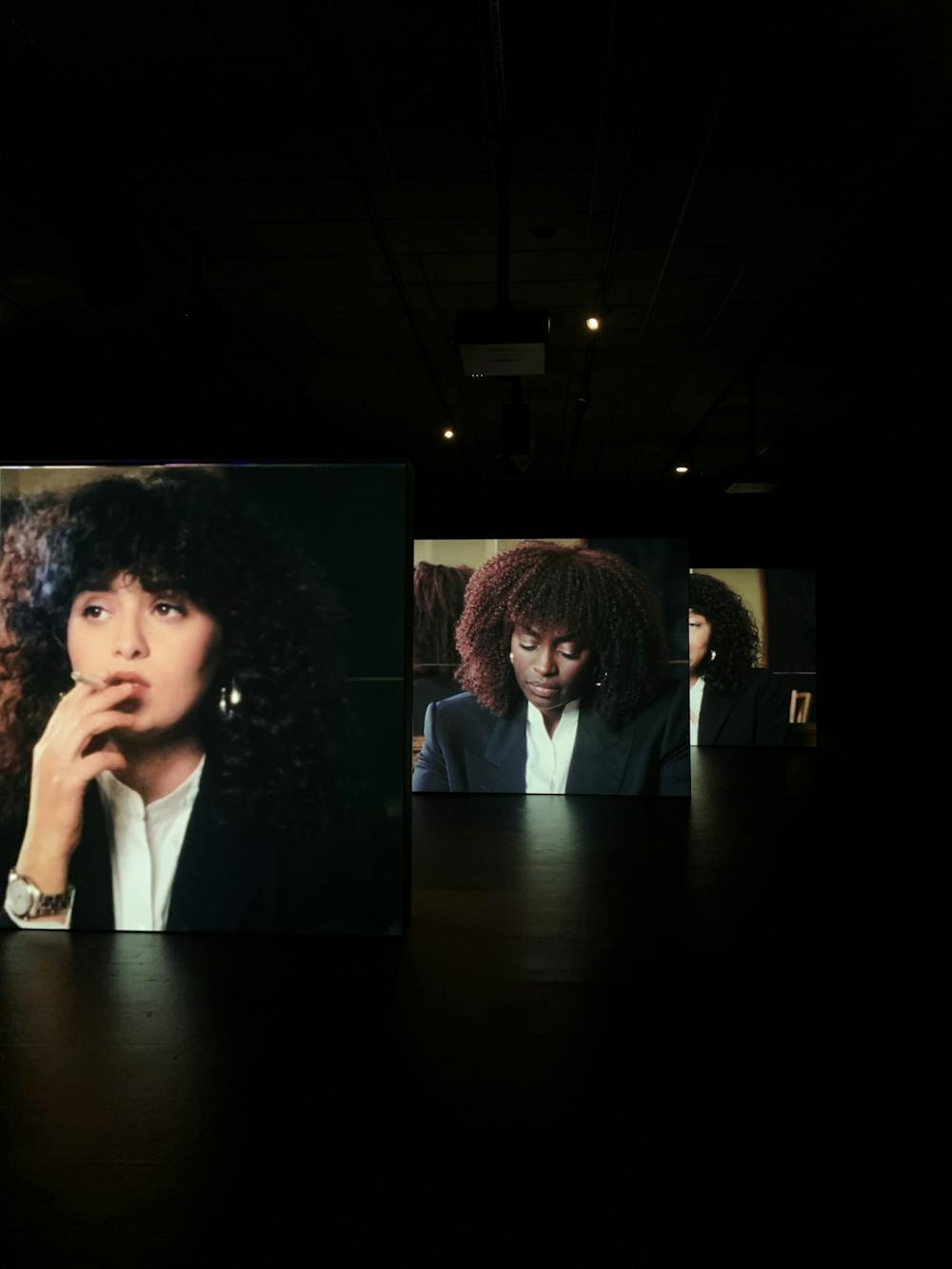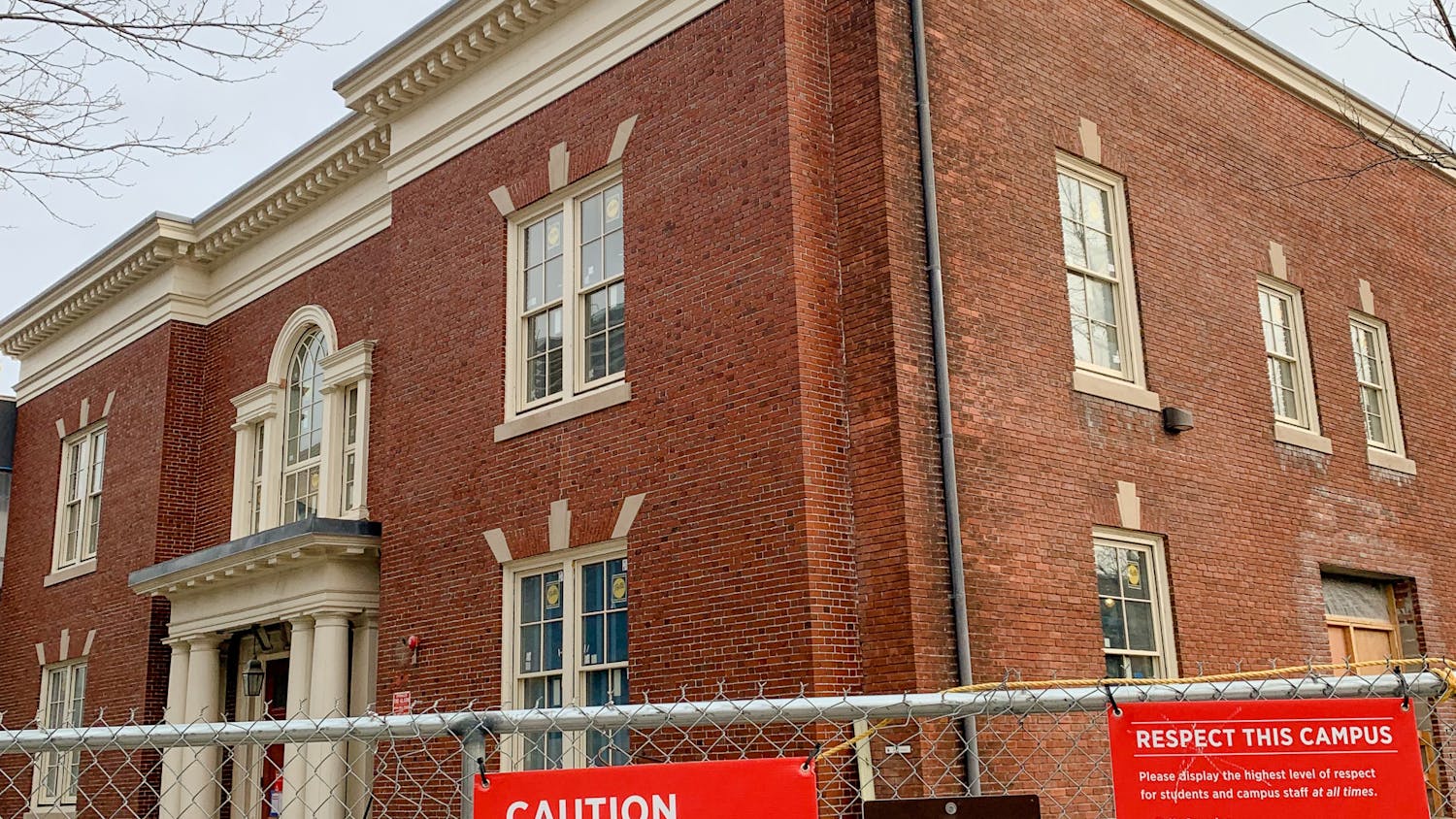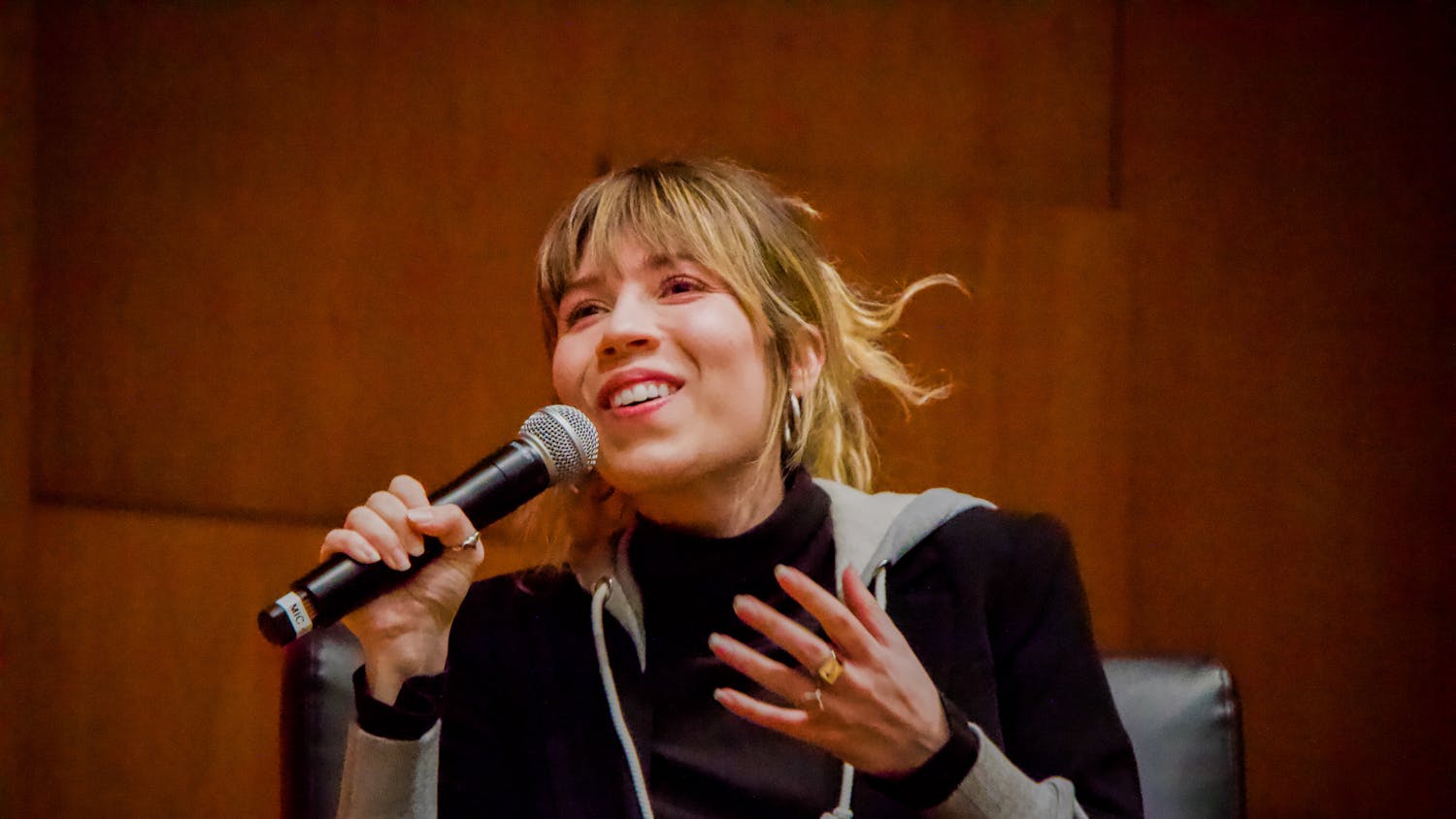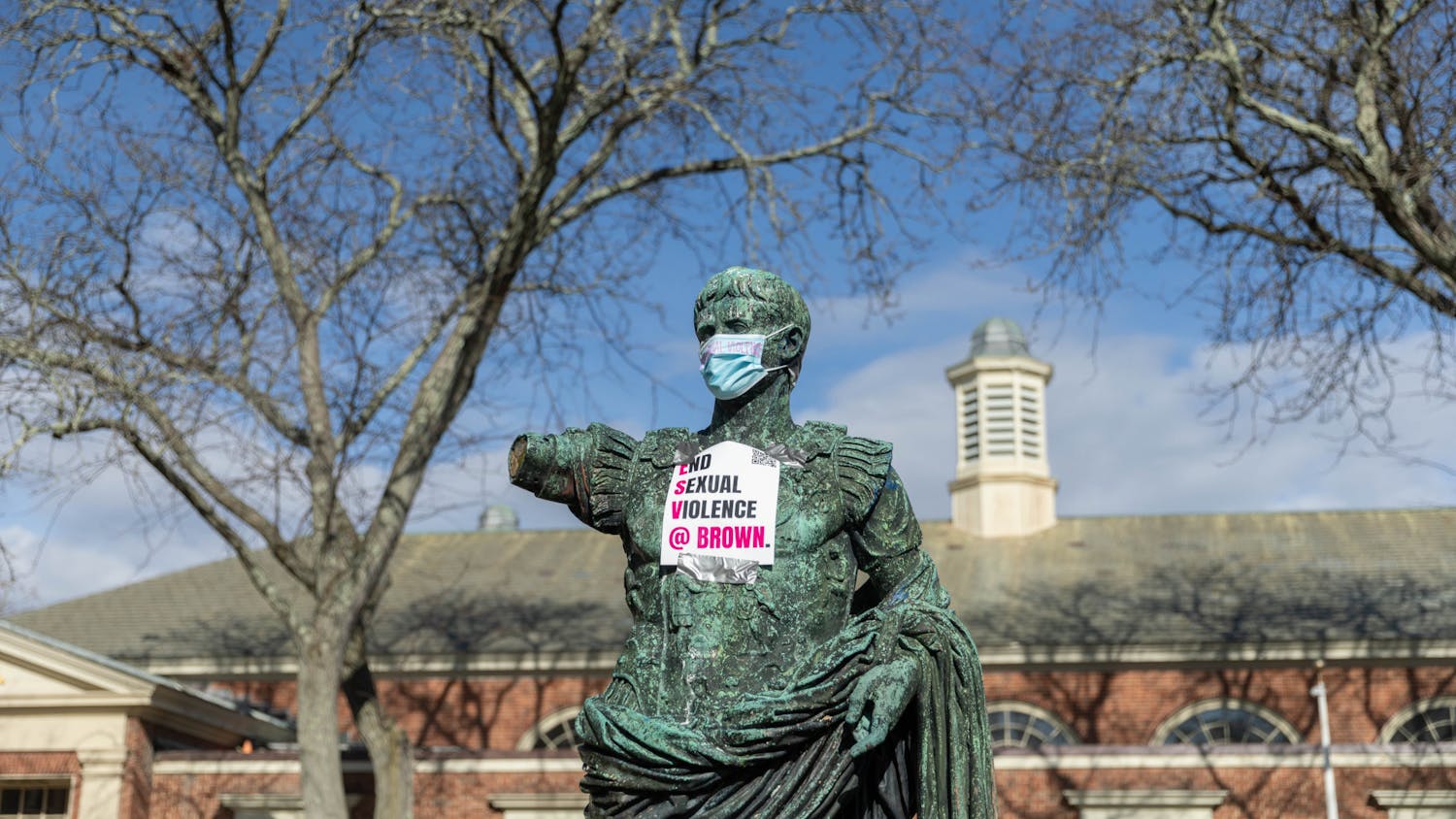The Brown Arts Institute held a reception celebrating the opening of its latest exhibition, award-winning filmmaker Elisabeth Subrin’s “The Listening Takes,” on Feb. 9. The exhibit, funded by BAI and on display at the List Art Center’s David Winton Bell Gallery, presents three portraits of French actress Maria Schneider through an immersive film installation. The exhibit will be on display until June 4.
When creating “The Listening Takes,” Subrin took inspiration from a 1983 French TV interview with Schneider in which she refused to discuss her role in Bernardo Bertolucci’s 1973 drama “Last Tango in Paris.” While on set for the film, Schneider was subjected to filming a rape scene without previous knowledge of its graphic nature. For years following the film, Schneider struggled with depression and addiction.
In the 1983 interview, Schneider “articulates her perspective as a woman within the film industry, (and) reveals a devastating prescience about the ways women are defined within and beyond cinema,” BAI Director of Exhibitions and Chief Curator Kate Kraczon wrote in an email to The Herald.
Subrin’s installation consists of a series of wall segments on which three videos play. Each of the videos display a reenactment of the interview, performed by one of three acclaimed actresses: Manal Issa, Aïssa Maïga and Isabel Sandoval. The recordings play simultaneously; as one actress speaks, the other two listen.
The installation is “an immersive, circular experience,” Subrin said. “With 13 channels of sound and nine speakers, you’re moving through the space in different ways.”
“You get a sense of this chorus of women listening and speaking,” she added. “There is an intimacy in those spaces between the screens.”
In creating “The Listening Takes,” Subrin sought to reclaim the agency of Schneider — who has often been painted as a tragic figure whose life was ruined by a male-dominated film industry — and shed new light on her often misunderstood story.
“There is so much inaccuracy in the dominant ethos of Maria,” Subrin said. “Her life is not ruined.”
Schneider “was very complicated,” Subrin added. “She would lie to the press, she would have different takes on things at different times, and I really love that. She’s not beholden to the press, to present herself in service of them.”
When choosing who should embody Schneider for “The Listening Takes,” Subrin wanted to cast diverse actresses who were involved in both film and activism. “I wanted to infuse this conversation with women who have had similar experiences in the industry, but are compounded by other issues as well in terms of their race and their gender diversity,” Subrin said.
Kraczon, who is also the chief curator of “The Listening Takes,” has known Subrin for over ten years. “We had always hoped to work on a film-based project together,” she wrote. “When she turned to Maria Schneider as a research project over five years ago I was kept informed of its progress.”
In 2022, BAI provided Subrin with funding for a film shoot in Paris which included two projects: “The Listening Takes” and “Maria Schneider, 1983.” The latter won the award for best documentary short film at the César Awards in Paris last month.
“The Listening Takes” has similarly received acclaim from a wide audience, according to Kraczon. “Both Elisabeth and I are getting messages from strangers, friends and colleagues to let us know how deeply the work has affected them.”
According to Artistic Director of the Brown Arts Institute Avery Willis Hoffman,“the piece is evergreen. You can keep returning to it and keep having a different perspective, a different set of thought processes.”
By displaying the work of diverse, process-driven artists like Subrin, BAI aims to enrich the University’s artistic presence. “The Brown Arts Institute is interested in the process, interested in inviting artists to talk about how they got to their project,” Hoffman said. “The Bell Gallery is a really wonderful space that can provide a focused, intense and intentional uplifting of an artist and their work that is moving away from the transactional and moving into a supportive networking.”
“The Listening Takes” provides audiences with the opportunity to contemplate the ways in which women have been represented within the film industry and beyond.
“I have been thinking about the trace of the piece, what is left with you as you walk away and what you think about a few days later,” Hoffman reflected. “That to me is the mark of a really incredible piece of art — that you don't forget it easily.”





